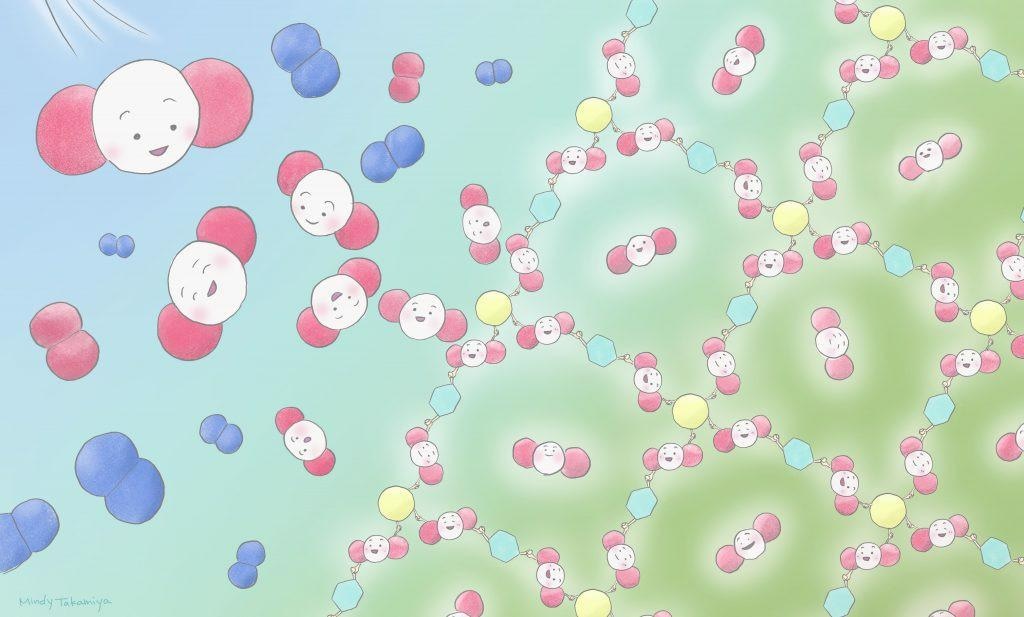An energy-efficient approach has been discovered by Japanese researchers to convert the main greenhouse gas, carbon dioxide (CO2), into useful chemicals.
 With the new method, carbon dioxide is transformed into useful porous complexes (PCPs/MOFs) at room temperature and without high pressure. Image Credit: Mindy Takamiya/Kyoto University iCeMS.
With the new method, carbon dioxide is transformed into useful porous complexes (PCPs/MOFs) at room temperature and without high pressure. Image Credit: Mindy Takamiya/Kyoto University iCeMS.
With the help of this technique, CO2 is transformed into structures known as metal-organic frameworks (MOFs). This implies a new and easier route to dispose of the greenhouse gas to help handle global warming.
The study was performed by researchers at the Institute for Integrated Cell-Material Sciences (iCeMS), Kyoto University, along with their collaborators. The study findings were reported in the Journal of the American Chemical Society.
Taking the CO2 released from fossil fuel combustion and converting the gas into valuable chemicals and materials is a promising approach to protect the environment. But because CO2 is a very inert and stable molecule, it is difficult to get it to react using conventional conversion processes.
Satoshi Horike, Study Lead and Chemist, Kyoto University iCeMS
“Our work demonstrates an easier approach that can be run at a much lower temperature and pressure. This should make reactions that use CO2 easier to produce and more popular,” added Horike.
MOFs were targeted by the Japanese group as they possess an extensive range of uses, inclusive of catalysts and biosensors. Furthermore, since MOFs are porous and have the ability to hold large amounts of gas, they exhibit promise as storage devices for sustainable hydrogen fuel.
To make the reaction work, the scientists bubbled CO2 at a pressure of 0.1 MPa and a temperature of 25 °C via a solution with an organic molecule known as piperazine, in what chemists term as a “one pot” procedure.
The MOF emerged rapidly as a white microcrystalline powder that could be gathered and dried. Analysis of its structure with the help of X-ray and nuclear magnetic resonance spectroscopy verified that the conversion had occurred as planned.
The MOFs consisted of a high surface area despite being made from more than 30% CO2 by weight — properties that make them appropriate as functional materials for various applications.
Currently, the researchers are looking for ways to see how they could make use of the reaction to convert CO2 directly from industrial fumes, like those discharged by coal and gas-fired power stations.
Direct utilization of CO2 is challenging, but it will potentially save a lot of energy that is required for the capture and separation of the gas. The emission of CO2 by fossil fuel combustion must be reduced and regulated to protect the environment. Our method here is a potential clue to help solve some important environmental problems.
Satoshi Horike, Study Lead and Chemist, Kyoto University iCeMS
Journal Reference:
Kadota, K., et al. (2021) One-Pot, Room-Temperature Conversion of CO2 into Porous Metal–Organic Frameworks. Journal of the American Chemical Society. doi.org/10.1021/jacs.1c08227.